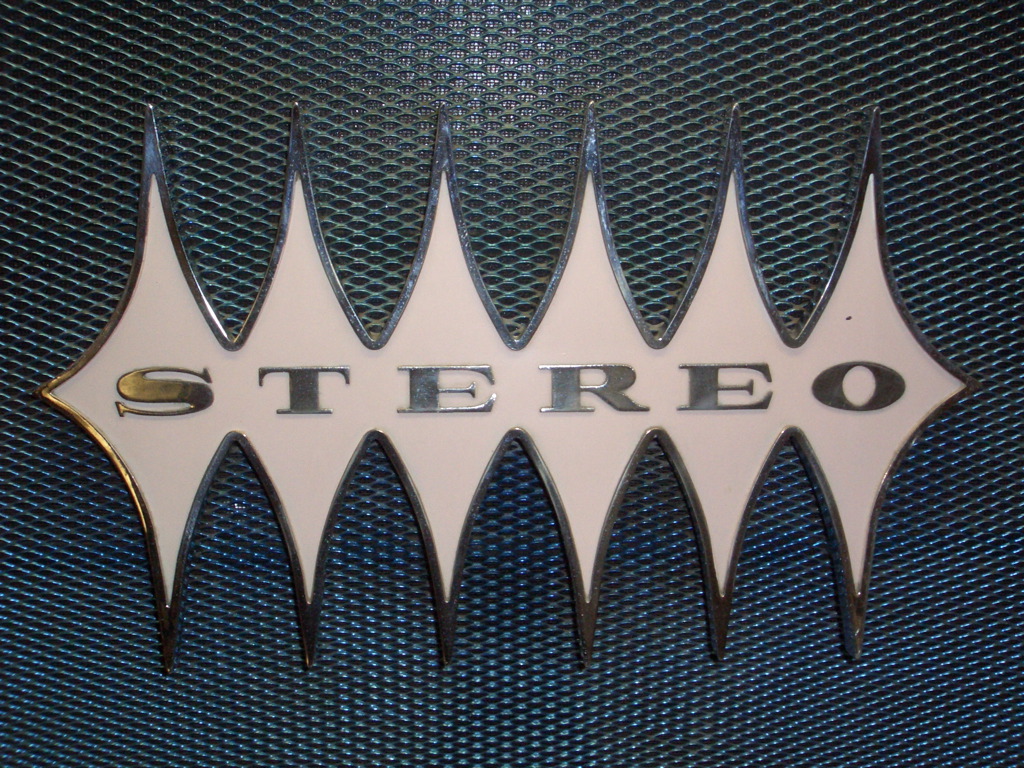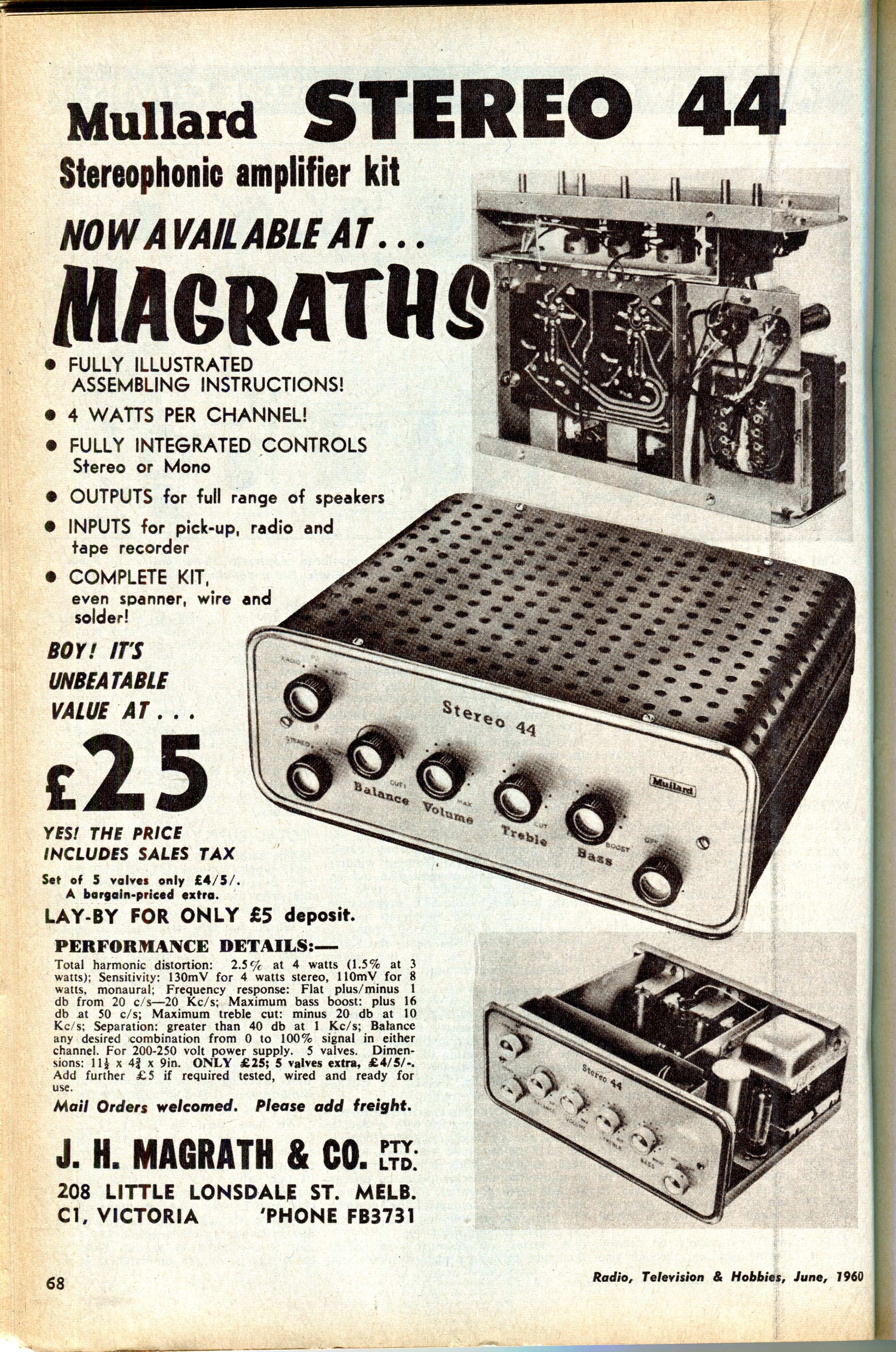
Introducing: The IHTOV Zine
Published on Dec 15, 2025
Christmas Music Selections
Published on Dec 14, 2025
The Beastie Boys and Me
Published on Dec 10, 2025
The Doors and Me
Published on Dec 8, 2025
More Liner Notes…
Featured Essay: The Stereo-Versus-Mono Conundrum Circa 1964
by Mark Orwoll

By Mark Orwoll
It wasn’t as if I didn’t have the money. I did. I had four dollars and a handful of pocket change.
The record bin at Thrifty Drug Store in La Mirada, California, where I stood, was admittedly full of my parents’ soul-crushing music: the Ray Conniff Singers, Vic Damone, the Mills Brothers. But on this bright sunny day in late January 1964, it held something more, the Holy Grail, fresh off the delivery truck: Meet the Beatles!, the group’s first album from Capitol.
We all knew the Beatles by then. KRLA had been playing “From Me to You” (released by Vee-Jay Records) on heavy rotation since the summer of ’63. “Please Please Me” had already charted in radio markets from Chicago to San Francisco earlier that year. Then illicit dubs of “I Want to Hold Your Hand” made their way through the radio underground starting with WWDC in December 1963 to make it on airwaves across the nation before its official release. Capitol Records rushed Meet the Beatles! into stores on January 20, 1964, to huge excitement. On January 25, Dick Clark’s Swan Records re-released the “She Loves You” 45, which had failed to chart when it debuted the previous September. Vee-Jay quickly reissued “Please Please Me.”
The point is that weeks before their February 9 appearance on The Ed Sullivan Show, the matter had been decided: The Beatles were the best band in the world.
So what was my problem on that sunny day in late January 1964? Simple: Do I spend $1.99 for the mono version or $2.99 for the stereo?
More Than Just Price
Don’t laugh. Dollars were hard to come by in 1963, especially for a 10-year-old would-be guitarist who didn’t even have a paper route. Filching dimes and quarters from Mom’s purse didn’t add up very fast. Dad’s pocket change under the sofa cushions in the living room rarely amounted to much. By saving a dollar on the purchase of a mono album, I was already halfway to the cost of the next one.
Moreover, the issue of sound quality entered into the decision-making process. Back home, I had a crappy little Sears Silvertone record player with a needle the size of a ten-penny nail, a speaker the diameter of a ladies’ wristwatch, and a nifty case that closed with a clasp so that you could carry it to your friend’s house—that is, if the clasp worked, which mine didn’t. We’re not talking high-fidelity here.
Sure, I could have opted for the rich symphonic soundscape of the Beatles in stereo, but to what end? A single tinny speakerette would sound horrible no matter how stereophonic the recording had seemed to the white-coated technicians back at EMI’s Abbey Road mixing lab in London. And so, of course, I choose the mono version.
I was not alone.
Stereo Albums on Mono Players
Dan Trigoboff is a legal scholar and retired professor from Virginia who grew up on Long Island in New York. He, too, faced the sound-quality issue.
“[My] first album was Simon & Garfunkel’s Sounds of Silence,” he recalled. “Second was Four Seasons’ (Valli, not Vivaldi) Gold Vault of Hits. Probably mono, since we played them on these small, incredibly cheap record players. In high school, I bought a 7-inch reel-to-reel tape recorder and stopped buying records for a while.”

Steve West, who has played bass guitar with bands across Southern California, grew up in my hometown of La Mirada. Rather than Thrifty Drug Store, he went to the Big A department store, whose record section dwarfed any other in town. Although he had previously purchased the soundtrack to the movie Tom Thumb, then Supercar from the TV show, he told me via email that the first meaningful record he bought was by the lads from Liverpool.
“The first record album I remember was Meet the Beatles!,” he wrote, “and it was probably on mono.”
Although his mom and dad had a hi-fi stereo and AM/FM console in the living room, Steve’s records were consigned to the portable player in his bedroom. Which was why the album choice, once again, was mono.
Howard Ruben is a journalist in Los Angeles, but was raised outside Buffalo, New York.
“I am pretty sure [my first album] was Meet The Beatles!, the U.S. version, on Capitol Records,” he told me recently. “It was definitely mono because we didn’t have a stereo record player just yet.”
The first album Chris Reynolds bought was I Feel Like I’m Fixin’ To Die by Country Joe and the Fish, followed almost immediately by Beatles albums. He made the mistake, however, of buying the stereo versions.
“My sound system was an old tube receiver with mono input, and I had no adapter to put between the turntable and receiver,” recalled Reynolds, now a staff writer at the Los Angeles Times. “So on those early [stereo-version] Beatles albums, where nearly all the vocals are on one side, I had to choose which channel I wanted to listen to—the instrumental track or the mostly vocal track.”
Joe Cutrone is a retired pharmaceutical salesman and now a popular drummer for several bands in New York’s Lower Hudson Valley. His memory of mono-versus-stereo prices aligns with my own recollection.
“The first album I bought with my own money was Cream’s Wheels of Fire,” he told me. “My older sister and I had several early Beatles albums in mono, which we usually got as presents. My earliest and best recollection is that mono albums cost $1.99 and stereo $2.99. I had a friend who worked in the record department at Mays in Jamaica [Queens, NY] and he would charge me the mono price for stereo records. I wonder what happened to him?
Well, Joe, he probably got arrested by his employer, charged, convicted, and ended up living like a hobo under a highway bridge. All so you could con Mays out of a stereo Beatles album. But were stereo records actually better? It depends.
Why Did Stereo Albums Cost More?
Experimental stereo pressings were first made in the 1930s, primarily for classical-music recordings, but didn’t become the norm until the 1970s. In the Sixties, some studios would use multiple microphones and then balance the sounds so a listener might feel he or she was right in the session, with a guitar over here and a bass over there and drums right up the middle. It was a primitive but sometimes effective use of stereo technology.
When done well, with expert mixing technicians and, ideally, input from the performers, the resulting stereo was an eye-opener. The sound wasn’t just wide, it was w-i-d-e! But the process for a studio to implement stereo was slow, requiring training, additional equipment, and a complete rethinking of just what a record could sound like.
Studios that didn’t have the time, staff, or inclination to record in true stereo had options, though. They could create artificial, or “panned” stereo by altering the sound oscillations between the two (left and right) mono tracks, adding high-pass and low-pass filters to one channel or the other, and then pushing out the altered sound through two speakers for a fake version created from a sole mono source.
Capitol Records created its own version of that technique in 1961 and called it Duophonic, which it continued to use into the 1970s. Other record companies used their own euphemisms, like “electronically re-channeled for stereo” (Columbia) and “electronically reproccessed stereo” (RCA).
Those electronically “stereo-ized” albums could sound egregiously bad. But even when studios were recording in true stereo, there wasn’t a great body of knowledge about how to do it well. Just listen to some of the early Beatles stereo recordings, with the vocals on one side and the instruments on the other. Today, a lot of collectors will swear that many records from the Sixties sound better in mono, as originally recorded and/or mixed, rather than in their stereo versions.
Yeah, Yeah, Yeah, But What About the Price Difference?
So why were stereo records more expensive? Studios had to invest in new technology, like stereo tape recorders. There was a modest increase in recording and mixing time (and a steep learning curve for the engineers), which added to the price. Plus, the stereo concept in the Sixties was still new in popular music, and consumers are usually willing to pay more for the newest thing, so manufacturers raise the price (i.e., the Greed Factor).
But ultimately everything comes full circle. Whereas many Boomers bought mono recordings to save a buck, xinthislifex posed this question on the r/vinyl subreddit:
“I’ve heard and read some arguments,” he wrote, “that mono recordings ‘sound better’ than stereo recordings… If so, it might be worth spending the extra cash on a [vintage] mono recording?”
The arguments in favor of mono recordings are compelling. They can be punchier, more centered, simply more in-the-pocket. It’s a nuance, and completely a matter of taste. I say tomato, you say stereo.
But back in the day, there was never any question why you should choose mono. Let’s face it: A dollar saved was one dollar closer to your next mono LP.
Mark Orwoll is a veteran journalist and longtime record collector. He is the author of a new travel memoir, Just One Little Hitch, about hitchhiking through Europe and Morocco in the 1970s.
I Have That on Vinyl is a reader supported publication. If you enjoy what’s here please consider donating to the site’s writer fund: venmo // paypal. Tips go toward paying writers, an editor and for site maintenance

